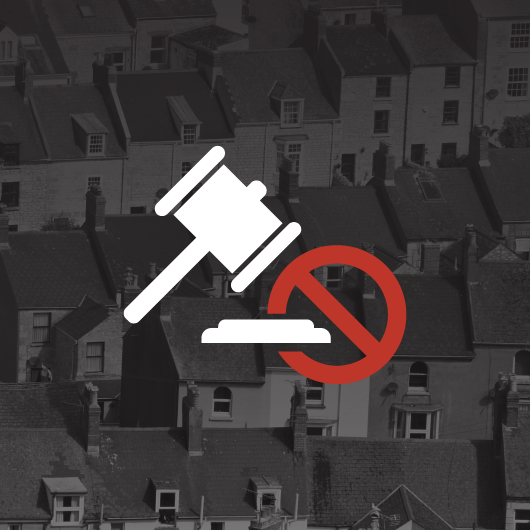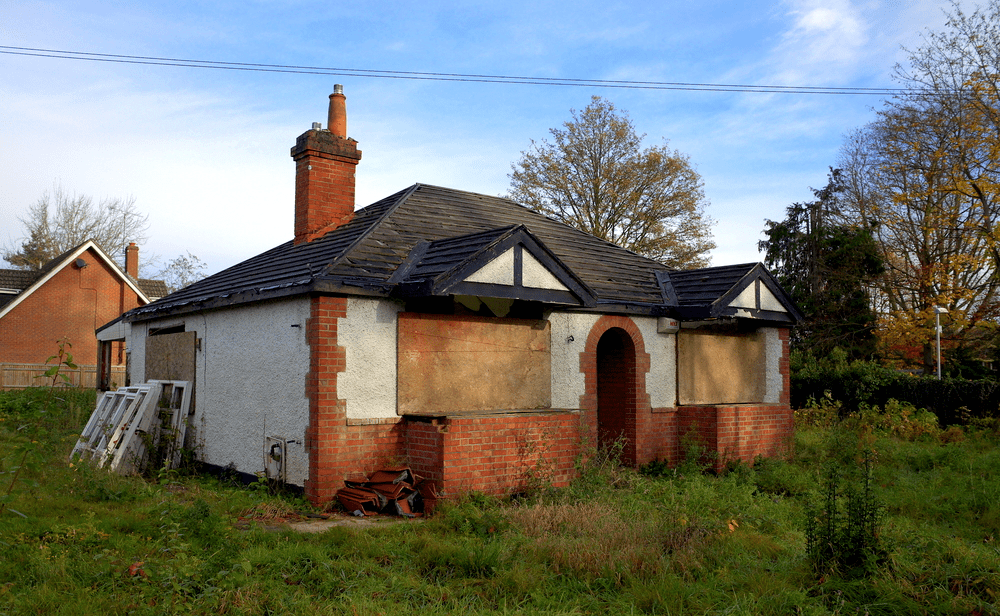Guide to Repossessed Property Investments

There are several different situations that can lead to a property being repossessed, the most common reason is when the owner defaults on the mortgage or finance arrangement.
What do banks do with repossessed houses?
Houses that have been repossessed by banks are resold to recoup any losses. Because banks and other lenders need to recover funds as quickly as possible, they will generally want to set the wheels of a sale in motion as quickly as is feasible and will turn to avenues like national property auctions in order to offload these properties.
Clive Emson explains how houses are sold through auctions and traditional methods, catering to both new and experienced investors.
Auctions attract cash buyers ready to close fast, whereas traditional sales take longer but may fetch higher prices.
Organisations selling repossessed properties have a legal obligation to advertise the property publicly to achieve the best possible price – if there is a surplus achieved above the debt on the property, this will be paid to the owner.
Is it cheaper to buy a repossessed house?
Although repossessed properties must be advertised publicly, the selling lender has no obligation to prepare a repossessed property for resale and their main interest is to sell the repossessed property as quickly as possible.
As a result, repossessed properties are often advertised with minimum effort, and typically for a very attractive / cheap asking or guide price to encourage quick interest.
For non-auction listings, once an offer is received, this must be advertised for a certain period of time to ensure it is the best offer.
Is buying a repossessed rental property a good idea?
Purchasing a repossessed rental property can prove lucrative – you ight find yourself buying up a property in a prime location at a discount to the current market value, which means you could enjoy superior rental yields. Some repossessed rental properties will come pre-tenanted and already furnished, which could help you save even further on marketing/maintenance costs.

How can I buy a repossessed house?
There are several ways to find out about repossessed properties for sale. One of the most popular places for investors to source cheap repossessed property is the auction market. The recent coronavirus pandemic means that most auctions have taken place solely online over the past year or so - although seeking out online auctions in areas outside your locale can actually be a good way to find out about property you might otherwise have missed out on.
There are also a number of relatively new companies in the UK which specialise in the quick sale of repossessed properties, and these too can be a great way to source worthwhile investments. In addition to this, you might want to keep an eye on your local newspapers, or perhaps even proactively contact your local estate agents from time to time. Some estate agents will deal with repossessed properties without directly advertising them, so it’s always worthwhile calling them to find out what is currently available.
Our Sourcing tool for repossessed properties uses an algorithm to identify reposessed properties on the market all around the UK.
How does buying a repossessed house work?
Purchasing a repossessed house is no different to buying a property on the open market. However, it’s important to do a little bit of research to eliminate the potential for any unwanted surprises further down the line.
Like any property purchase, your first step should involve getting a mortgage agreement in place. It pays to shop around, so don’t be afraid to seek advice from a variety of sources, including independent brokers, if you are unsure where to begin.
After you’ve passed eligibility and have found a mortgage deal that you’re happy with, it’s time to start the application process. During this process, you should gain an idea of how much you will be able to borrow. It can be beneficial to agree to a mortgage “in principle” if you’ve already found a property that you have your heart set on. If you need a contingency plan after finding a property at auction and have ended up bidding outside of your means, a bridging loan might also be a good idea.
How to spot a repossessed property on the market
Not all repossessed properties are advertised as such - but with a bit of investigative nous, you can spot repossessed properties on the market, which could put you at an advantage when it comes to making an offer. Things to look out for include:

- Boarded up doors and/or windows
- ‘Do not use’ signs on plumbing items. This signifies that the water has been drained to prevent leaks or pipe damage during cold weather while the property lies empty.
- Enforcement notices providing the owner with information on when/how to collect their personal effects.
Things to consider when purchasing a repossessed home
- Structural surveys
Before agreeing to anything, you might want to consider why the previous owner has been unable to sell the property. It could be the case that a serious but hidden defect has prevented sales in the past, which has ultimately led to the repossession of the property. You should therefore be willing to pay for a full structural survey to be undertaken on any potential property before you commit to a purchase. - Reconnection of utilities
If a home has been repossessed, it is likely that some or all of the utilities have been disconnected. When you finalise the purchase, you may have to pay extra to have things like electricity, gas and telephone connectivity to be reinstated with each respective supplier. - Protect yourself with an insurance policy
Regardless of whether you’re purchasing a repossessed home or a property on the open market, you’ll want to take out a relevant insurance policy to stay protected. This will ensure that you won’t have to fork out too heavily for any unexpected expenses. - Check your credit rating after you purchase
While this is becoming increasingly unlikely, it is not impossible for your credit record to become tangled up with that of a previous homeowner. If the previous owner has defaulted on a mortgage, this means that they will have difficulty accessing credit. If your ownership of the property is mistakenly associated with the previous owner’s poor credit score by a credit reference agency, this could impact your ability to access credit in the future. About a month or so after the purchase of the property is completed, you should be prepared to check your credit score and be willing to contact the relevant credit reference agencies to rectify any errors. - “Repossession” doesn’t mean “bargain”
As with any property, it is essential to research the area before committing to a purchase. You should consider the transport links, local amenities, proximity to schools, employment levels and crime rates in the area. If you’re planning on renting out the property, these issues can affect your overall rental yield, so remember to choose wisely before rushing in with an offer.
What are the disadvantages of buying a foreclosed house?
In some instances, you might find that repossessed or foreclosed properties may have been neglected during the previous owner’s tenure. If a previous owner has been struggling to meet mortgage repayments, it is possible that they may also have been unable to keep up with the regular maintenance costs of owning a home.
It is also not uncommon for previous occupants to strip out vital fixtures and fittings before handing over the keys to the property. When you purchase a repossessed property, you should do so with the expectation that a little refurbishment is likely to be necessary. It’s always important to factor in the costs of any potential maintenance work before committing to a purchase, otherwise, you could find yourself dealing with more than you bargained for.
To start searching for repossesssed properties near you now, try our Sourcing tool.



